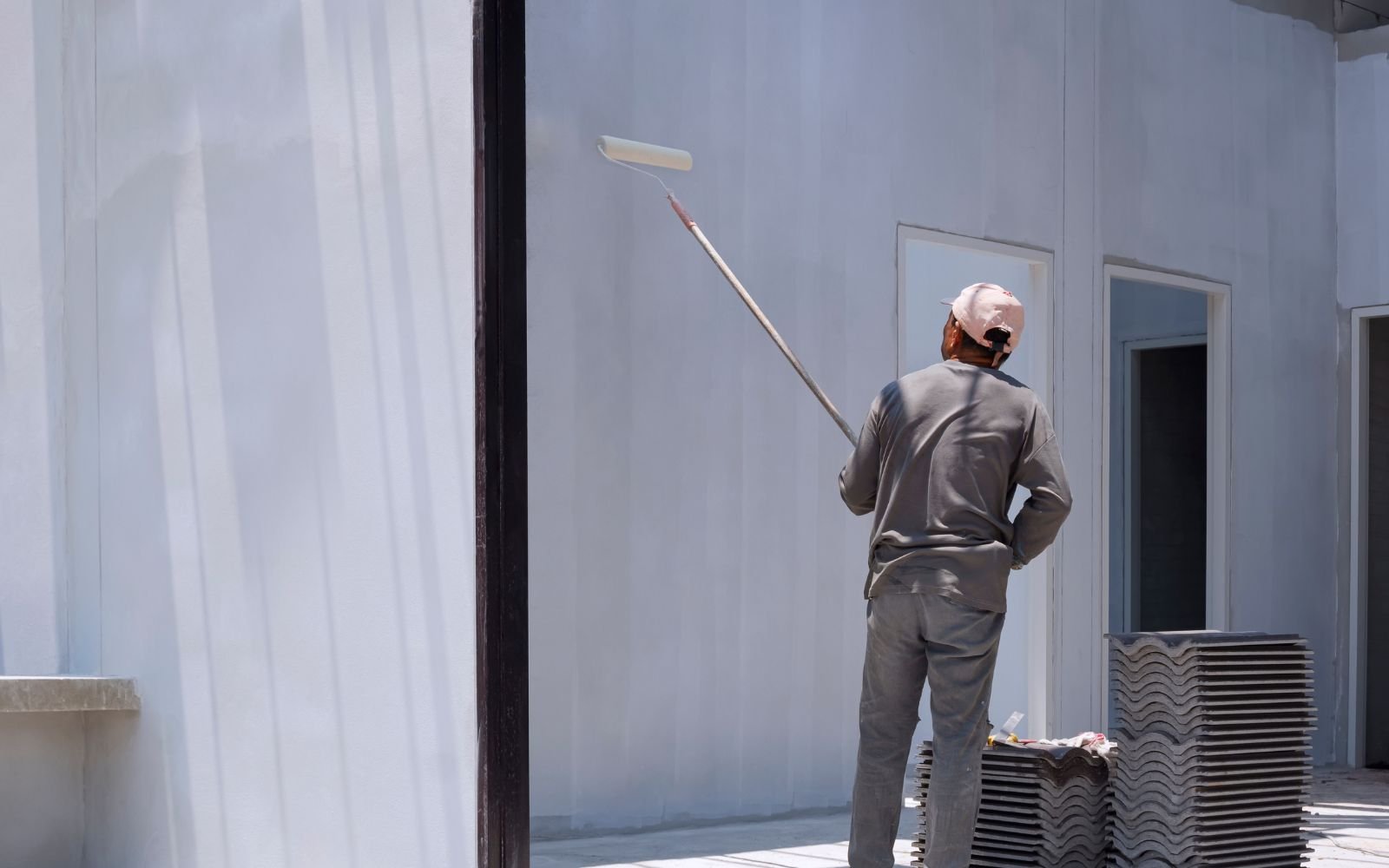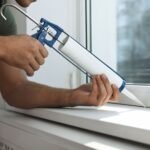When painting, many people think about colors and brushes. But one key step often gets missed: primer. Think of primer as the foundation of your paint job. A weak foundation can cause a house to crumble. Likewise, a bad primer can lead to paint that won’t stick, fades, or wears out. This blog will explore why primer is necessary. We’ll also cover how to choose the best one for your project. Lastly, we’ll answer a common question: How long does primer take to dry? “Whether you work with wood, drywall, or plastic, drying times matter. They can make all the difference for a perfect finish.
Table of Contents
ToggleWhy Is a Primer Necessary?
Picking the right primer is crucial for a smooth and long-lasting paint job,” says Hayfield. “Think of it like building a house—if the foundation is weak, the structure is more likely to collapse. Similarly, if you don’t use a good primer, your paint might not stick well or last as long. A quality primer helps the paint go on evenly and spread better. It also prevents the surface from soaking up too much paint.
How to Choose the Right Primer?
With so many primers choosing the right one can be tough. However a couple of factors can help narrow the choices. The type of primer you use depends on the job. So, you must select a primer based on the space, says Erika Woelfel, VP of color and creative services for Behr. She explains what to consider when choosing a primer: Check for stains, moisture damage, and painted surfaces.
Hayfield suggests using the primer recommended by the paint supplier. The right primer and topcoat will give the best look and performance.
Types of Primer
There are three main types of primer paints. They are latex, oil-based, and shellac. Each is for a specific purpose. Each one has its own strengths and best use cases.
Latex Primers
Latex primers are water-based, making them a great choice for interior surfaces. They dry in a short amount of time so they are often used in areas like bathrooms, kitchens, basements and attics. They are also perfect for prepping unfinished drywall before painting.
One of the biggest perks of latex primer is its easy cleanup—you need soap and water to remove stains or spills.
Oil-Based Primers
Oil-based primers work well on wood by sealing porous surfaces. They are also great for exteriors, as they withstand harsh weather. Another key benefit is their ability to block stains.
Oil-based primers release strong fumes while drying. If you are using them indoors, ventilate the space by opening windows or using fans.
Shellac Primers
Shellac is not for manicures! As a primer, it creates a strong protective layer that resists water and stains. It also enhances the wall’s brightness, giving it a polished look. Plus, it helps prevent rust and wood stains from seeping through the paint.
Shellac primers are versatile. They work on metal, wood, and plastic. They stick well to surfaces, dry quickly, and work in high humidity.
Each type of primer has its own advantages, so choosing the right one depends on your project needs!
How Long Does Primer Take to Dry?
When working on a project, knowing how long your primer takes to dry is crucial. Drying times for acrylic paint can change based on different factors. One key factor is the type of surface you are priming.
Let’s break it down by material so you can get the best results for your project.
Primer Drying Time on Wood
Wood is highly absorbent, which means primer tends to soak in at a fast rate. Many primers dry to the touch in about an hour. But most manufacturers recommend waiting about three hours before painting. This extra time ensures better adhesion and a smoother final coat.
Tips for Priming Wood
- Know Your Wood: Is it new? Has someone painted or stained it before? This affects how well the primer adheres.
- Sand the Wood First: This removes rough spots and creates a smooth base.
- Clean off Dust After Sanding: A damp cloth or tack cloth works best.
- Apply an Even Coat of Primer: Use a brush or roller for the best results.
Primer Drying Time on Drywall
For drywall, latex-based primer is the best option. It usually dries to the touch in about an hour. But humidity and temperature can extend this to three hours. To be safe, always check the manufacturer’s instructions.
Tips for Priming Drywall n
- Repair any Holes: Use spackle or joint compound for a smooth surface.
- Sand Walls Until Smooth: This helps the primer adhere better.
- Wipe Down Walls with a Damp Cloth: This removes dust and debris.
- Let the Walls Dry Completely Before Priming: Moisture can affect adhesion.
- Apply an Even Coat of Primer: A roller works best for large areas.
Primer Drying Time on Plastic
Plastic is a nonporous material, so choosing the right primer is key for proper adhesion. Shellac-based primer is the best choice. It dries in a short time. Usually, it is dry to the touch in 20 minutes. You can apply a second coat in just 45 minutes.
Tips for Priming Plastic
- Clean with Rubbing Alcohol: This removes grease and residue.
- Lightly Sand the Surface: This helps the primer stick better.
- Dust off any Debris: Use a microfiber cloth or compressed air.
- Apply a Thin, Even Coat of Primer: Too much primer can cause drips or uneven coverage.
Drying times can vary based on material, temperature, and humidity. Primers may feel dry to the touch quickly. But waiting the recommended time before painting ensures better adhesion and durability.
When in doubt, check the primer can for drying times. If possible, allow extra time for the best results!
How to Make Spray Paint Dry Faster?
If you’re working on a project with a tight deadline, waiting for spray paint to dry can feel like forever. Luckily, there are a few tricks to speed up the process and get things done faster.
- Apply Thin Coats Instead of Thick Ones : It may be tempting to apply a thick coat of paint to get good coverage fast. But, that actually slows the drying process. Thick layers take longer to dry and can even lead to drips or an uneven finish. Instead, apply many thin, even coats, allowing each layer to dry before adding the next.
- Improve Air Circulation : Good airflow helps paint dry faster. Open doors and windows to let fresh air in, or set up a few fans to keep air moving around the painted object. Just be careful not to aim the fan directly at the paint—that can cause dust or debris to stick to the surface. Instead, position the fan so it circulates air around the room.
- Use a Dehumidifier to Reduce Moisture in the Air : If you’re painting in a humid environment, the excess moisture in the air will slow down the drying time. A dehumidifier helps pull moisture from the air, creating the perfect drying conditions. If you don’t have one, turning on an air conditioner can also help reduce humidity indoors.
- Choose a Fast-Drying Spray Paint : Not all spray paints dry at the same speed. If time is short, use fast-drying paints like epoxy or polyurethane spray. Some of these dry to the touch in just a few minutes, cutting down your waiting time significantly. Check the label before buying to find one that suits your project.
Bonus Tip: Use a Heat Source (With Caution!) : In cooler temperatures, drying times can be painfully slow. A space heater or heat lamp can help speed things up. But, don’t place it too close to the painted surface. Extreme heat can cause paint to bubble or crack. A gentle, warm environment is best.
Use these techniques to cut drying time. This helps your project stay on track and avoid delays!
What Happens If You Paint Before a Primer Is Dry?
It’s easy to think that once a primed wall dries it’s ready for a top coat, but rushing the process can lead to trouble. Even though the primer may feel dry, it’s still curing. This stage is necessary for it to bond with the surface.
Hayfield said: Primer may feel dry to the touch. But it’s still curing to reach its full performance. Overcoating too early can interfere with this process. It can slow it down or prevent it from working as expected.
If you paint too early, you may encounter the following problems:
Poor Adhesion: The topcoat may not adhere well, which can lead to peeling or flaking.
Uneven Finish: The paint may look striped, patchy or develop an inconsistent texture.
Long Drying Time: Trapped uncured primer slows paint drying.
How To Know If Primer Is Ready For Paint?
Don’t rely on touch alone. Always check the manufacturer’s drying and curing times. Some primers need a few hours, while others take a full 24 hours. Factors such as temperature, humidity and ventilation can also affect drying time. If you’re not sure, an easy test is to press your fingernail onto the primer with light pressure. If it leaves a dent, it’s not ready yet! Patience pays off when it comes to a smooth, durable finish.







